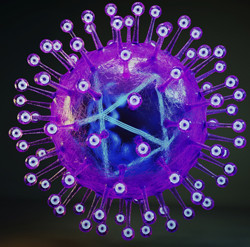miRNAs of oncogenic viruses
The causes of many cancers are viruses. Recently, viral miRNAs have been identified as crucial players in the pathogenesis and the survival of some viruses. It is now well documented that modulation of miRNA expression may be linked to cancer development and could thus represent ideal targets for drug therapy. New knowledge on how miRNAs are expressed and regulated in the infected cells is important for medical research. The goal of the EU-funded Marie Curie fellowship 'Regulation of viral miRNAs processing' (MIREG) was the investigation of miRNA biogenesis, a complex and highly regulated process. The investigation focused on the expression of a cluster of 12 miRNAs encoded by Kaposi’s sarcoma-associated herpesvirus (KSHV). KSHV is an oncogenic human virus, causing severe disease like Kaposi’s sarcoma and other lymphoproliferative disorders. Its miRNAs are expressed in the cancer lesions and are important to maintain latency, inhibit apoptosis and regulate the host cell cycle. Researchers found that miRNAs accumulated in the cells at the various levels that depended on the cellular context. They determined the secondary structure of the long primary transcript (pri-miRNA) leading to the many mature miRNAs. The results uncovered direct correlation of the specific structural features of the pri-miRNA and the relative abundance of the mature miRNAs in the cells. The suggestion is that this happens due to the structural impact at the first step executed by the special processing enzyme called Drosha. Researchers also explored the requirements for the protein co-factors at this maturation step. Two papers were published based on the results of the study. In conclusion, this project contributed to the future investigation of viral miRNA role in regulation of disease pathogenesis.







